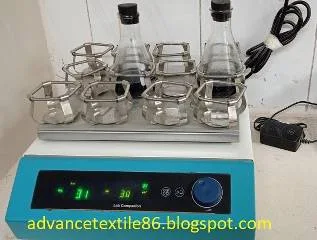Introduction
The
pure water is neutral. When the acid dissolves in water, the pH will be less
than 7 (25 °C). When dissolved in a base, or alkaline water, the pH is higher
than 7. A solution of a strong acid, like hydrochloric acid, at a concentration
of 1 mol dm−3 has a pH of 0. Strong
alkali solution, like sodium hydroxide, at a concentration of 1 mol dm−3, has a pH
of 14. For this reason, the measuring pH values are mostly between 0 to 14,
although negative pH values and values above 14 are completely possible.
While pH is a logarithmic scale, the difference in one pH unit is equal to ten
times the difference in hydrogen ion concentration.
What is pH?
The decimal logarithm of the reciprocal of the hydrogen ion activity in a solution is called pH. The pH scale indicates the concentration of hydrogen ions in the logarithmic and contrast solutions. This is because the formula used to calculate the pH is associated with the base 10 logarithms of the molar density of the hydrogen ions in the solution. Exactly, pH is the negative of the base 10 logarithms of the activity of the H+ ion.
Importance of pH in the textile industry
The
pH value of textiles refers to the acid and alkaline components of the fabric
residue, which is one of the limited indicators of harmful substances affecting
human health. The National Standard GB 18401-2010 "Basic Technical Specification
for National Textile Products" stipulates that the pH value of textile
products for children and direct skin appearance should be controlled between 4
and 8.5. The pH value of textile products that are not directly exposed to the skin should be controlled from 4 to 9 If the products need to be treated with
the following processing techniques, the pH value can be relaxed from 0 to 10.5
to 4.
In
general, human skin pH ranges from 5.5 to 7 and is weakly acidic. The high pH
value of textiles will destroy the weakly acidic environment of the skin on the surface of the human body, cause itching and expose the skin to other
pathogenic bacteria and even cause dermatitis and other symptoms.
Also,
the high or low pH value of the fabric makes it easy to damage the fabric
during storage. It is seen that the pH value of textile products is closely
related not only to the health of consumers but also to the quality of textile
products.
pH testing procedure
Method:
ISO 3071 2005 (E)
A.
Equipment/ Apparatus
i.
Scissors
ii.
Scale
iii.
Stoppard glass or propylene flasks
iv.
Mechanical shaker
v.
Beakers are chemically resistant with a capacity of 150 ml.
vi.
Rods chemically resistance
vii.
pH Meter with a glass electrode capable of measuring to at least 0,1 pH units.
viii.
Balance accurate to 0,001 g.
B.
Reagent: For pH Meter calibration
i.
pH 4 Potassium hydrogen phthalate solution 10.21 g/l.
ii.
pH 6.9
iii.
Potassium hydrogen orthophosphate (Na2Hp04) 3.9 g/l.
iv.
Potassium chloride solution 0.1 ml/l prepared using distilled or deionized water.
v.
Distilled or Deionized water at least grade 3.
C.
Sampling
i.
Cut the specimen at least 150 mm away from the selvage of the fabric
ii.
Specimen Size 5 mm Squire.
iii.
Specimen weight 2 grams.
D.
Working Procedure
i.
Take 100 ml distilled water in the Stoppard glass.
ii.
Sample put on the Stoppard glass.
iii.
Shaker for two hours.
iv.
Measurements of the pH of the aqueous extract.
v.
Immerse the electrode time in the same solution used to prepare the extract
until the indicated pH value stabilizes.
vi.
Immediately immerse the first exhaust in a beaker at a depth of at least 10 nm
and stir gently with a rod until the pH value is fixed.
vii.
1st reading steers 2nd 30 seconds does not steer 3rd not steer 30 seconds.
viii.
Result record 2nd and 3rd average.









0 Comments